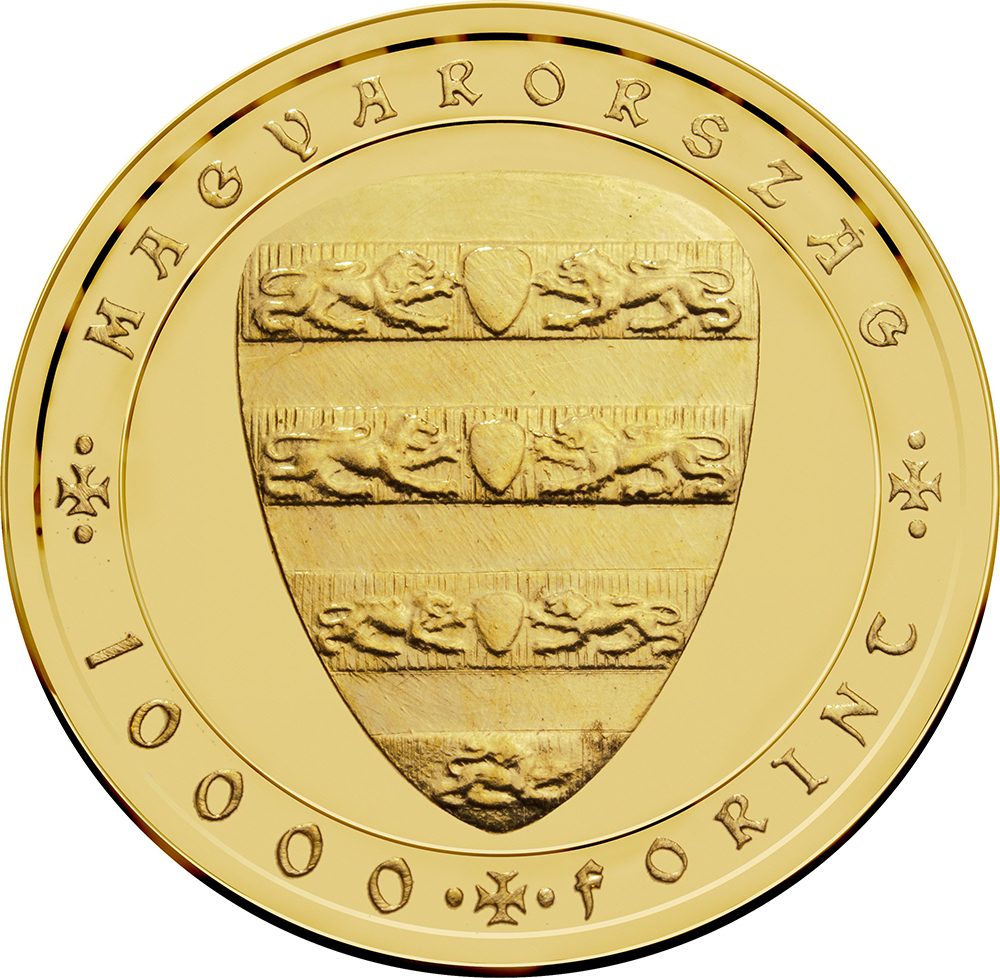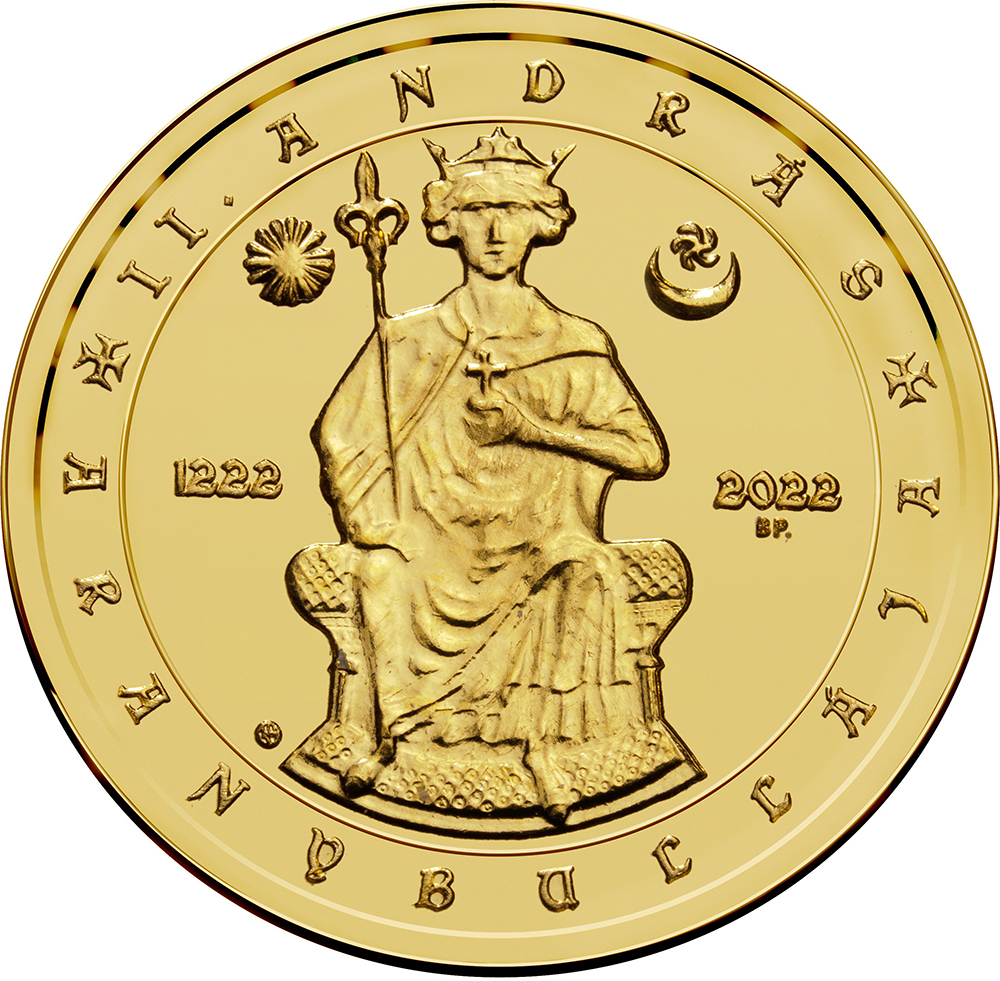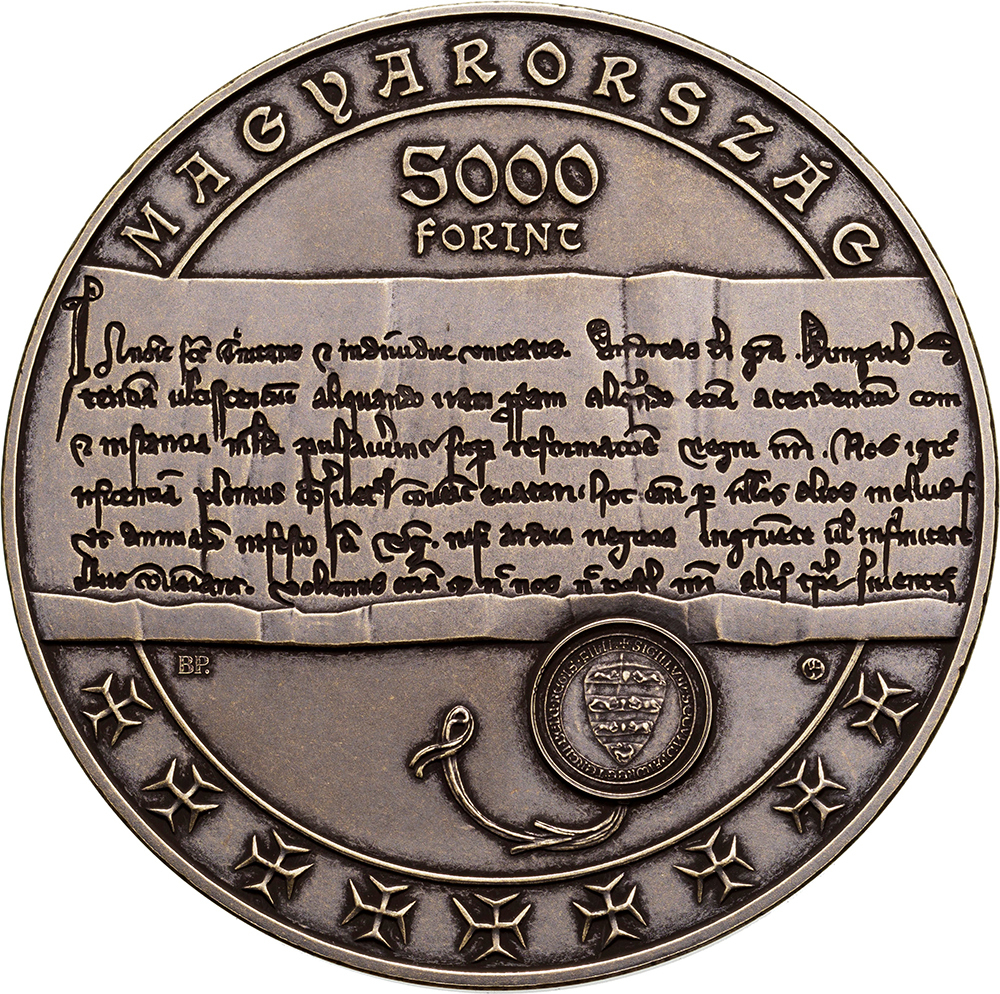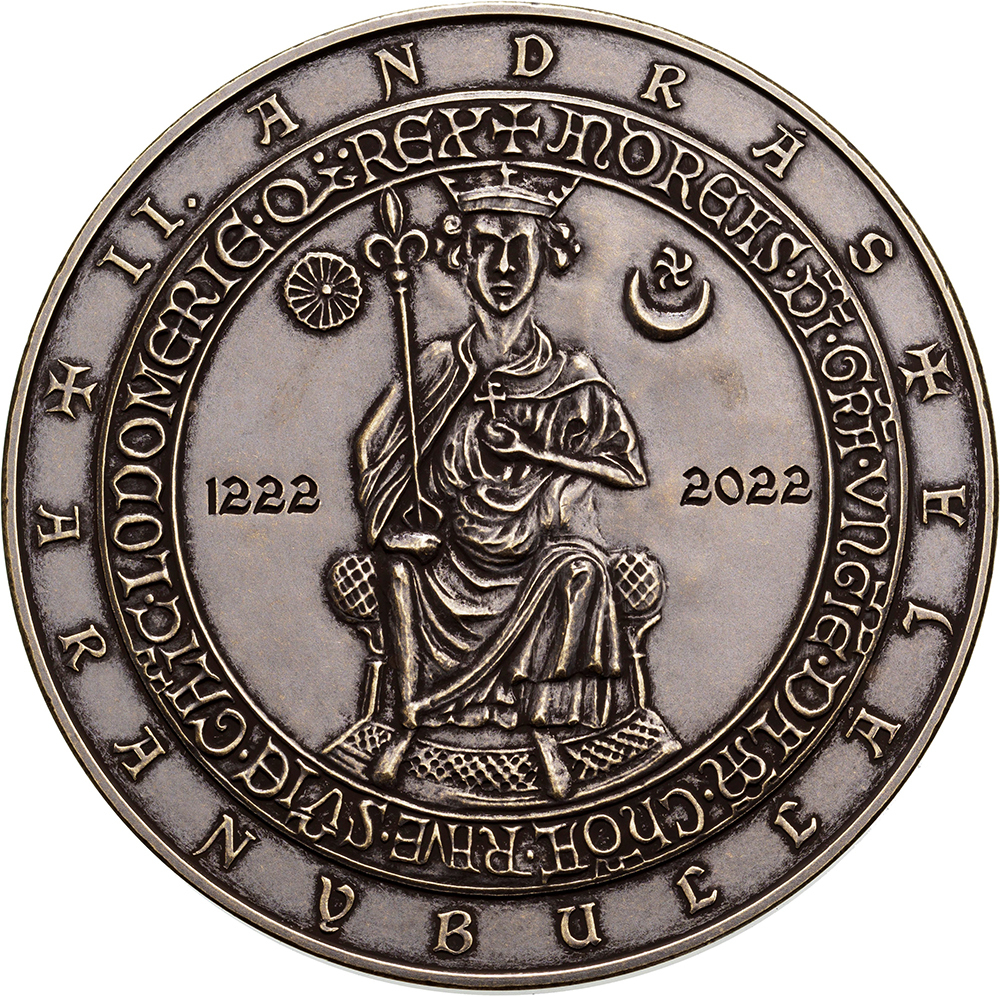20 May 2022
Named “II. András Aranybullája” (The Golden Bull of Andrew II of Hungary), the Magyar Nemzeti Bank is issuing a small-sized gold coin at a face value of 10,000 forints and a non-ferrous metal coin at a face value of 5,000 forints, which is the same size as the seal on the Aranybulla, in Esztergom today to honour the 800th anniversary of the issuance of the document. The two collector coins mark two separate issuances with different coin designs. This specific issuance is quite special among the Hungarian commemorative coin issues, as the gold and non-ferrous coins interlock into each other, but also stand alone independently. The collector coins were designed by applied artist and goldsmith Zoltán Endrődy.
Named after its golden seal, the Aranybulla is one of the most well-known documents in the history of Hungary. Issued by Andrew II of Hungary in the spring of 1222, the edict is an exceptional reminiscence in the history of Hungarian law, it is the symbol of Hungarian historic constitution. Although its true significance was not realised in its own age, only later. After Louis I of Hungary (1342-1382) confirmed the charter of 1222 and codified its text in 1351, it was considered as the framework of privileges of noblemen for centuries. As a result, it was also included in István Werbőczy’s Opus Tripartitum in 1517, a manual of Hungarian customary law in the Middle Ages. Thanks to Werbőczy, the Golden Bull had constituted one of the cornerstones of the resistance by Hungarian orders and of the efforts to achieve independence until 1848.
To honour the 800th anniversary of the issuance of the Golden Bull, the Magyar Nemzeti Bank is issuing a small-sized gold coin at a face value of 10,000 forints and a non-ferrous metal coin at a face value of 5,000 forints, which is the same size as the seal on the Aranybulla, today. The special feature of the gold and non-ferrous coins is that they can interlock into each other, but also stand alone independently.
On the obverse of the small gold coin, surrounded by a circular line, the centre motif is the modern representation of the coat of arms of Hungary, exclusively used on the Golden Bull issued by Andrew II of Hungary. On the edge of the obverse, in a semi-circular legend, at the top, between motifs comprised of dots and crosses, the compulsory design elements of collector coins are featured: the inscription “MAGYARORSZÁG” (Hungary), the denomination “10,000” and the lettering “FORINT”.
On the reverse of the small gold coin, the central motif surrounded by a circular line, the modern representation of the king from the Golden Bull is seen without the circular legend. On each side of this representation the following years are placed: “1222” marking the issuance of the Golden Bull and “2022” referring the issuance of the collector coins. Below the mint year the mint mark “BP.” is found. On the edge of the reverse, in a circular legend, separated by a cross motif, the legend “II. ANDRÁS ARANYBULLÁJA” (The Golden Bull of Andrew II of Hungary) is featured. On the edge of the reverse, to the left of the representation, the master mark of applied artist Zoltán Endrődy, who designed the coin.
II. András Aranybullája small-sized gold coins
|
Obverse |
Reverse |
The gold collector coin is struck in .999 fine gold. It weighs 0.50 gram and it is 11 mm in diameter and has a smooth edge. Altogether 10,000 pieces can be minted in BU finish.
On the obverse of the non-ferrous metal collector coin, the centre motif is a representation of the text in the charter, the earliest authenticated copy of the destroyed Golden Bull and its seal featuring the coat of arms of Hungary on the original Golden Bull. Above the representation of the charter, in the middle, in two lines the denomination “5000” and the lettering “FORINT” are placed. Below the representation, on the left the mint mark “BP.”, on the right, the master mark of applied artist Zoltán Endrődy, the designer of the coin, are seen. On the edge of the obverse, separated by a circular line, at the top, in a semi-circular legend, the inscription “MAGYARORSZÁG” and at the bottom, a motif comprised of 9 crosses are found.
On the reverse of the non-ferrous metal coins, the central motif surrounded by a circular line, the side of the seal on the original Golden Bull featuring the king is seen. Inserted into the representation of the seal, to the left of the figure of the king, the year “1222” referring to the issuance of the Golden Bull, and to the right “2022” marking the year of issuance of the collector coin and the 800th anniversary of the Golden Bull, are featured. On the edge of the reverse, in a circular legend separated by a line, separated by a cross motif each, at the top, the legend “II. ANDRÁS” and at the bottom “ARANYBULLÁJA” is featured.
II. András Aranybullája non-ferrous metal coins
|
Obverse |
Reverse |
The non-ferrous metal coin is minted from an alloy of copper (63%) and nickel (37%), it weighs 117.5 grams. It is 67 mm in diameter, which is the same size as the original seal on the Golden Bull, its edge is smooth. Altogether 10,000 pieces can be made in tarnished finish.
The gold and the non-ferrous metal coins are available for purchase at the coin shop (Budapest, distr. V, 7 Báthory street) and webshop (https://www.penzvero.hu) of the Hungarian Mint Ltd., the producer and distributor of the coins from 20 May 2022. To promote the role of these collector coins to transfer value and raise awareness as widely as possible, the “II. András Aranybullája” non-ferrous metal collector coins will be available at face value- while stocks last- for one year from the date of issuance.



